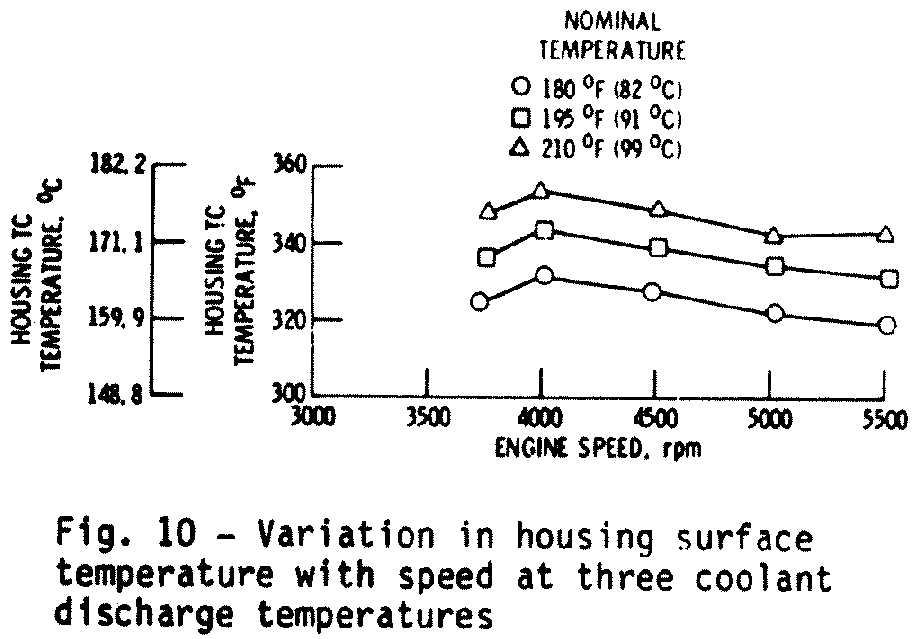Rusty,
This was posted years back on the “other”
list. If your engine is assembled, then I don’t think you could
locate the hole with enough certainty as to not breach the water passage.
There is very little margin for error. So, this is really something you
would want to do while the engine is apart.
If not, then I’ll try to explain how
I did mine. There is a web very near the leading plug that is wide enough
for a small hole to be drilled without breaching the water jacket. Drill
a hole just large enough for the thermocouple wire to fit into (approx. 1/8”),
and drill down through the web until the drill just barely touches the steel
liner. Don’t drill through the steel liner.
The primary thing the “CHT”
probes will tell me is if all 3 chambers are burning the same, and after a
period of time, it will give me a “normal” CHT. Below is a
chart showing rotor housing temps at various rpm’s. It will be
interesting to see what happens to the CHT’s during SAG, not that I’m
looking forward to it happening.
Mark S.

You've probably
mentioned this before, but can you refresh my memory as to where you put these
probes? I'm guessing you could just use the ring type that go under
the plug (if they'll fit in the recessed hole) Is there an
official spec for these temps in the area you're measuring?